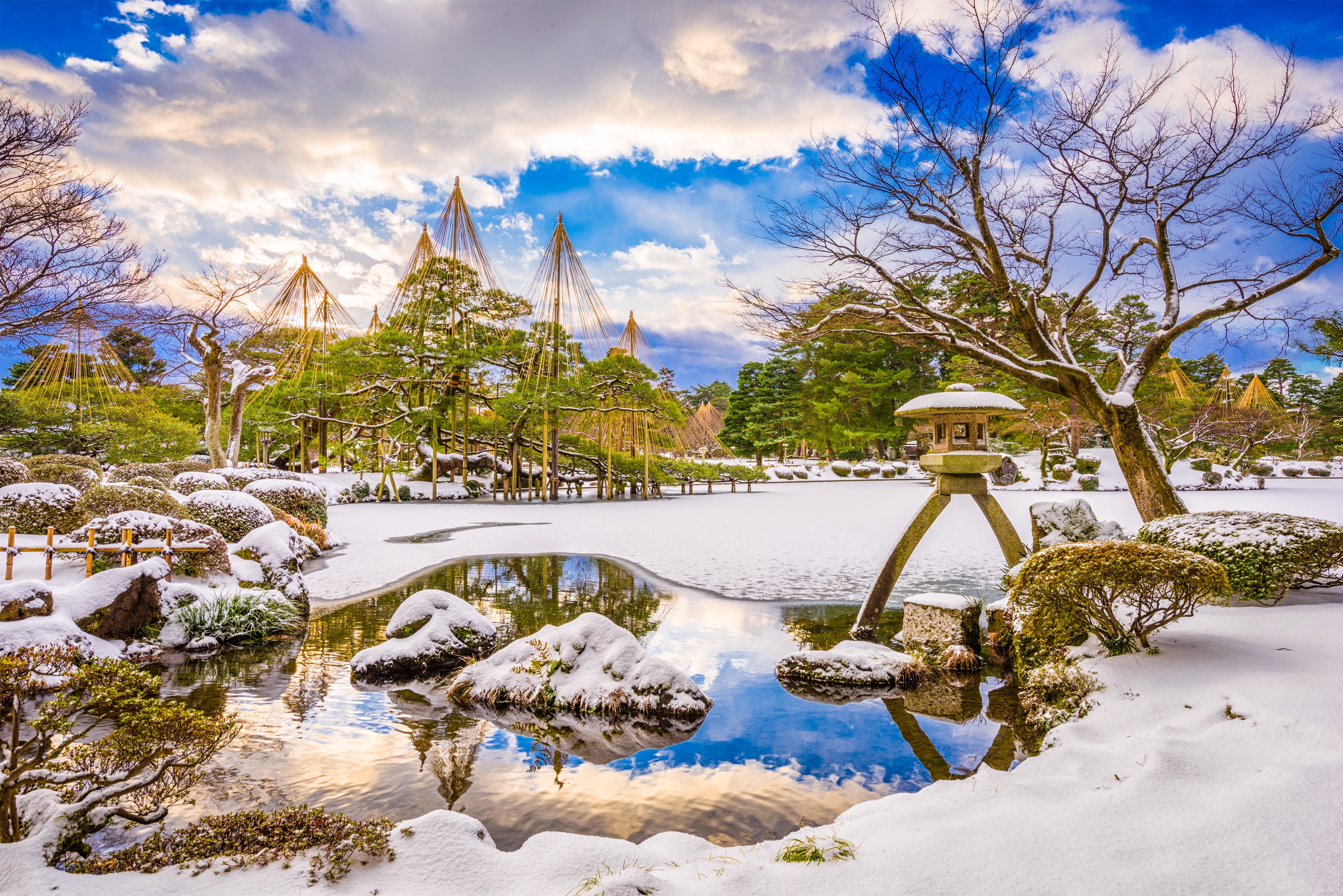https://au.trip.com/moments/destination-totsukawa-60756/
2025 Totsukawa Travel Guide: Must-see attractions, popular food, hotels, transportation routes (updated in June)
Totsukawaの本日の天気
Rain 22-27℃
Totsukawaで人気のAttraction
Kumano-Kodo Nakahechi Pilgrimage Route
(23)All Moments About Totsukawa
Tanize Suspension Bridge
I went to the "Yanize Suspension Bridge" in Totsukawa Village, Nara Prefecture ((((((っ・ω・)っ Japan's longest suspension bridge✿゚❀.(*´▽`*)❀.゚✿ Surrounded by mountains, the view of the Totsukawa River flowing below is spectacular♡Kyaa (∀〃(〃∀)Kyaa♡ There are wooden boards laid out at your feet, but you can't stand on the net at the edge The sign "No more than 20 people allowed on" makes you wonder if it's fragile? It makes you feel scared ( ;´Д`)Heehee Also, since it's a suspension bridge, it does sway quite a bit (。>﹏<。)💦💦 But it's nice to walk in the air with such a spectacular view (ˊo̴̶̷̤ ̫ o̴̶̷̤ˋ)♡ 🏍Yanize Suspension Bridge🏍 Address: 65-2 Uenoji, Totsukawa-mura, Yoshino-gun, Nara Prefecture Opening hours: 24 hours Admission fee: Free #Domestic travel #Nara Prefecture #Totsukawa-mura #Yanase suspension bridge #Nara trip #Nara sightseeing #Nara trip #Amazing view #Suspension bridge #Japan's best suspension bridge #Touring #SceneryしのびちゃんとTAISHIのツーリング日記3[Nara] A spectacular view and a thrill?! Tanize Suspension Bridge
Tanize Suspension Bridge in Nara Prefecture. Anyway, it's a suspension bridge with a spectacular view. Recommended for those who want to see beautiful scenery. However, it creaks and creaks every time you walk on it 💦 It sways quite a bit, so you can experience the thrill. Those who are afraid of heights may not be able to do it 😭 For safety reasons, more than 20 people cannot cross at the same time. It was a great view and a little scary when it swayed, but it's a place you should definitely stop by if you're nearby! It seems to be a spot for autumn leaves, and you may be able to see especially beautiful views in the coming season...When you go to Nara, why not consider it as one of your options for sightseeing in Nara? 🍁Memo✍️ 800 yen for regular cars, 400 yen for two-wheeled vehicles, and free bridge crossing fee. 【Address】65-2 Uenoji, Totsukawa-mura, Yoshino-gun, Nara Prefecture 637-1103 #OutdoorMay & Hana7Touring the Doro Gorge by riverboat [Kawasemi]⭐
Address: 404 Kamishita, Totsukawa-mura, Yoshino-gun, Nara Prefecture Atmosphere/Facilities: We operate riverboats and rent out canoes, kayaks, and SUP boats. ✨ Recommended points: A riverboat ride through Toro Gorge is a summer riverboat ride where you can see the fish in the water and feel the coolness of the water. ✨ If the weather is good, the cliffs of Toro Gorge are reflected in the water, creating a spectacular view, so we recommend it. ✨ Average price: 2,000 to 3,000 yen Budget per person: 2,000 yen Rating: Overall rating ⭐4.5 #summer weekend trip #spectacular viewGO/Travel life6Stay in a hotel designated as a tangible cultural property!? [Toro Hotel Main Building] ⭐
This is the place I recommend this time✨ The Toro Hotel stands on a steep cliff✨ Address: 405 Kamishita, Totsukawa-mura, Yoshino-gun, Nara Prefecture 647-1581 This hotel is designated as a tangible cultural property by the prefecture, and has a retro atmosphere with over 100 years of history. Currently, it operates as a restaurant and cafe, as well as selling miscellaneous goods and offering activities✨ Unfortunately, you cannot stay overnight, but if you come to Toro Gorge, I highly recommend the delicious hayashi rice here✨ #summerweekendtrip #coupletrip #greatviewGO/Travel life5Mount Gomadan, the highest peak in Wakayama
You can drive part of the way, but the actual climb is about 200 meters. Driving to the trailhead is a bit difficult, as there are many sharp curves at the pass. Because of the high altitude, the temperature is a bit low and chilly. The sesame soft serve ice cream at Goma Sun Tower at the trailhead is excellent♬#Breathtaking viewMikicya11Kumano Sanzan's Okunoin
#aprilblooms A sacred place of Shugendo located directly below the top of Mt. Tamaki at an altitude of 1076 metres. At the time of Emperor Jinmu's eastern expedition, it is said that he rested his soldiers in this place and prayed for good luck, and he has gathered faith as the inner temple of Kumano Sanzan. It is registered as a constituent asset of the World Heritage Site "Sacred Sites and Visiting Roads in the Kii Mountains" and the historical site "Omine Okukado". Although you can go by car, you need to be careful when driving because there is a narrow mountain road with ninety-nine folds. It is not uncommon for snow to accumulate in winter. In addition, there are many days when thick fog occurs, and the precincts are surrounded by a fantastic atmosphere.PettoBeautiful boat trip and spectacular views on Totsukawa 🚢🌄
Totsukawa is a region rich in nature located in the southern part of Nara Prefecture, and there are many spots where you can enjoy beautiful scenery in every season. In particular, a boat trip on the Totsukawa allows you to enjoy the magnificent scenery along the river, and you will be overwhelmed by the beauty of nature. The scenery seen from the boat is as beautiful as a painting, especially in the autumn foliage season. 🚤🍁 The appeal of a boat trip • A view that is one with nature: When you board a boat, you can see the beautiful scenery of the lush mountains and valleys along the Totsukawa River up close. The mountains reflected on the surface of the river are like a mirror, and they are soothing to the soul. 🌳 • Beauty in every season: Fresh green leaves in spring, cool waterside in summer, beautiful autumn leaves in autumn, and snowy scenery in winter, each season has its own charm. Especially in the autumn foliage season, the mountains surrounding the river are dyed red and yellow, and you can enjoy a spectacular view. 🍂 Basic Information 📍Location: Totsukawa Village, Yoshino District, Nara Prefecture ✴︎Access: Approximately 2 hours by bus from JR Nara Station, or by car. ✴︎Fee: The price of the sightseeing boat varies depending on the season and plan, but it is generally around 1,500 to 2,000 yen for adults. ✴︎Opening hours: The operating hours of the sightseeing boat vary depending on the season, so we recommend checking in advance. 🚢Travel TIP: Totsukawa is also famous as a hot spring resort, so it is also recommended to spend some time relaxing at a nearby hot spring resort after the boat trip! #Spring0yenTrip #DomesticTravelアシ旅Cafe at Toro Hotel | A hideaway in Nara where you can enjoy history and spectacular views 🍃🏞️
Located in Totsukawa Village, Yoshino District, Nara Prefecture, Toro Hotel once operated as a lodging facility, but has now reopened as a cafe, offering visitors a historic building and beautiful scenery.  The appeal of Toro Hotel Cafe • Historic building: Opened in 1917, the building is over 100 years old and has a retro, warm atmosphere. • Spectacular location: Built on the cliffs of Toro Gorge, you can enjoy beautiful views of the four seasons from the window.  • Special Hayashi rice: Hayashi rice, made with local ingredients and painstakingly prepared, is highly praised by visitors.  Basic Information • Address: 405 Kamishita, Totsukawa-mura, Yoshino-gun, Nara Prefecture • Business Hours: 11:30-until sold out (Closed on Wednesdays and Thursdays) • Access: Approximately 15 minutes by car from "Doro Gorge Meguri no Sato Kumanogawa" Travel Tips • Reservations: As this is a popular cafe, we recommend making a reservation in advance. • Nearby Sightseeing: You can enjoy the beautiful scenery of Doro Gorge and a water jet boat cruise.  • Notes: In winter (January to the end of March), the cafe is open by reservation only, so please check the official website for the latest information before visiting.  Why not spend a special time at the cafe at Doro Hotel, where history and nature blend together? #Spring0yenTrip #DomesticTravelアシ旅A completely natural hot spring and high-quality cuisine will leave you feeling satisfied! "Totsukawa Onsenkyo Yunotani Senkei"
Yunotani Senkei, located in Totsukawa Village, Nara Prefecture, is a hideaway-like inn for adults where you can relax in a completely natural hot spring, which is poured from a 570-year-old spring without adding water, heating, or circulating filtration. It is located in a very quiet place, away from the hustle and bustle of the city, so you can relax both body and mind. Photos 1-3 are of the large public bath (taken with the permission of the facility). The sound of the babbling brook nearby is also soothing. [Photos 4-5] The view from the large public bath to the guest rooms. [Photo 6] The entrance to the guest rooms. All nine buildings are independent detached buildings. The moment I stepped inside the building, I was surprised to be greeted by the aroma of hot spring water wafting through the air. [Photos 7-8] This time, I was able to stay in a suite! As expected, it was very spacious and comfortable. [Photo 9] All drinks are free to drink. [Photos 10-12] The indoor bath and open-air bath in the room. Both are completely natural hot springs, with no water added, no heating, and no circulating filtration. As a result, the water is very hot, and needs to be adjusted with cold water. (Photo 13) An ultra-luxurious dinner! A variety of Japanese dishes made with carefully selected seasonal ingredients from the Kii Peninsula are served in beautiful tableware, making it a delight to both taste and look at. (Photo 14) Earthenware pot with matsutake mushrooms and other mushrooms from Totsukawa. I was surprised at how many matsutake mushrooms were included! (Photo 15) This is a rare type of wagyu beef called "Mikumano beef," of which only about 100 are shipped out each year, and the meat just melted in my mouth! (Photo 16) Salt-grilled sweetfish from Totsukawa. Personally, I often find the smell of sweetfish to be a problem, but this wasn't the case at all and was absolutely delicious! (Photo 17) For dessert, we had pear compote. [Photo 18] Breakfast was also delicious! Since dinner was heavy, I felt that they had been considerate in providing me with something easy on the stomach in the morning. I was able to fill my stomach with high-quality food and relax in the soothing hot springs... it was a very fulfilling stay. #tripAccommodationReport1 minute traveller2📍Toro Hotel Cafe
Although it has a hotel in the name, it is actually a cafe where you can eat delicious food while looking down on the Toro Gorge valley. The building used to be an inn, but the fourth generation owner renovated it into a cafe, so the name remains a hotel. It is certainly quite old-fashioned lol There is also an observation point of Toro Gorge next to the hotel👀 Reservations are required for meals, and some dishes require reservations 3 days in advance📞 It's a pain, but it's definitely worth it❤️ . . . 📍Toro Hotel Cafe 🗺️ Nara, Japan 🕑11:30- 💰¥2000 #tripfood #cafehopping #greatviewmeyoutravelsThe ultimate power spot, Tamaki Shrine
#FuriTabi This time, I came to offer my thanks with my cousin from Tokyo. This was my fifth visit, but my first formal visit. I first came to Tamaki Shrine four years ago, and since then, the flow of my family has changed dramatically. Please come and visit the shrine. Please note that for formal visits, men must wear a suit, and women must be dressed in a similar outfit. I wore a navy blue dress. It is better to wear something with sleeves, not sleeveless. 📍Address: 1 Tamakigawa, Totsukawa-mura, Yoshino-gun, Nara Prefecture 647-1582山ここ[Japan's longest bus route] Yagi-Shingu Line
The Yagi-Shingu Line is the longest bus route in Japan, stretching 169.85 km from Yamato-Yagi Station in Nara Prefecture to Shingu Station in Wakayama Prefecture. It has 168 stops, and the journey takes an amazing 6 hours and 30 minutes from the start to the end. It boasts the longest travel distance in Japan among routes that do not use expressways. Along the way, you will pass by Tanize Suspension Bridge, the longest suspension bridge used for daily life in Japan, Totsukawa Village, the largest village in Japan, the World Heritage Site "Sacred Sites and Pilgrimage Routes in the Kii Mountain Range," and many hot springs that are known only to those in the know, so you will never get bored of enjoying the scenery along the way. In addition, if you ride the entire Yagi-Shingu Line from Yamato-Yagi Station to Shingu Station on the same bus, you will receive a commemorative gift. Ride the entire longest bus route in Japan and get a souvenir to remember your trip. #bustripぐんそTanize(Tanise) Suspension Bridge
#japantrip Tanize Suspension Bridge, nestled in the scenic landscapes of Tanise in Japan, offers a breathtaking and exhilarating experience for nature enthusiasts and adventure seekers. The suspension bridge spans across picturesque valleys, providing panoramic views of lush greenery and flowing streams. The bridge's design blends seamlessly with the natural surroundings, offering a harmonious connection to the environment.Claire’s AdventuresThe Tamaki Shrine
#japantripTamaki Shrine is a sacred place that perfectly fits the phrase "a place you can only go to if called by the gods." Its deep history and mysterious atmosphere give a unique charm to visitors. The journey to the shrine is like an adventure crossing the mountains, and once you arrive you are enveloped in a sacred atmosphere. Once you visit, you will never forget the special atmosphere, and you will want to return again and again. However, because it is a sacred place, it is required to pay respect and quietly purify your mind.Claire’s Adventures[Totsukawa Village] (Totsukawa Village, Nara Prefecture, former province name: Yamato)
<The deepest part of Japan, where the will of loyalty to the emperor was steadfast; its spiritual power and unique climate create a feeling of another world> The place name "Totsukawa" appears almost always at a time when Japanese history is about to undergo great change, and when the storm settles down, it has a strange breathing that sleeps quietly for hundreds of years. This mountain village, located in the southernmost part of Yamato Province (present-day Nara Prefecture), is the largest village in modern Japan, and its size exceeds the entire 23 wards of Tokyo. The Omine Okugake Trail, which runs from Yoshino to Kumano, runs through this area, and it is filled with the spiritual power of nature and the depths of faith, so to speak, it is filled with the feeling of "the deepest part of Japan." The Jinshin War of 672 was the trigger for Totsukawa's appearance in history. When Prince Oama (later Emperor Tenmu), hiding in the mountains of Yoshino, raised an army, the warriors of Totsukawa gathered along the mountain paths and are said to have contributed greatly to his victory. Perhaps because of this history, the people of Totsukawa have had a strong desire to serve the emperor for generations, and the Imperial Court, taking into consideration their achievements and the steep terrain with steep mountains and valleys, recognized the area as a special area with tax exemption. Totsukawa was formally under the control of the Imperial Court and the Shogunate, but in reality, the local people were able to govern themselves. This unique climate, which also resembled a kind of independent country, attracted the attention of forces that tried to resist the "mainstream" of each era, and especially during the Kaiten period of the Meiji Restoration, loyalists who advocated loyalty to the emperor traveled deep mountain paths to visit this village. In the history of Totsukawa, the "Tenchugumi Incident" that broke out in 1863 was probably the most significant turning point in Japanese history. This incident, in which a group of ronin who aspired to revere the Emperor, expel the barbarians, and overthrow the shogunate occupied Gojo, a Tenryo (imperial territory) in Yamato Province, and openly rebelled against the shogunate, was later celebrated as the beginning of the Meiji Restoration. One of the reasons they deliberately invaded deep into Yamato Province was the existence of Totsukawa, which firmly upheld the tradition of loyalty to the Emperor. As soon as Tenchugumi occupied Gojo, they dispatched people to Totsukawa first, and asserted the legitimacy of their uprising, which was in obedience to the imperial order. They gained the support of the Totsukawa villagers, who are said to number 1,000. The villagers believed the words of Tenchugumi and joined the siege of Takatori Castle, but when they found out that the Tenchugumi themselves were designated as rebels in a political upheaval, their morale dropped and they left. This made Tenchugumi's defeat decisive. However, even after this, the people of Totsukawa were recognized as a rare existence that stuck to the cause of the Emperor amid the intertwining of many ideologies that sometimes contained contradictions, and appeared in history with the sharpness of a flying arrow. (As an example of how this characteristic was used, when the assassin tried to assassinate Sakamoto Ryoma, he falsely claimed to be a Totsukawa samurai to lull Ryoma into a false sense of security. You can learn more about this unique Totsukawa culture at the Totsukawa Village History and Folklore Museum (photos 3-6).) On the other hand, Tamaki Shrine (photos 1, 7-10) is a major foundation for cultivating this cultural and spiritual culture of Totsukawa. The shrine is located in a sacred area where the Omine Okugake Trail approaches Kii Province (present-day Wakayama Prefecture), and has continued to serve as the guardian deity of Totsukawa since ancient times. According to legend, the shrine was built by order of Emperor Sujin on Mount Tamaki, which was the route of Emperor Jimmu's eastern expedition. In reality, however, it is believed to have been a sacred place that was born spontaneously, as people found a god in the mountain itself, which is covered with giant trees and boulders. If you visit the site, you will see a cross-section of the strata on the approach to the shrine, which gives a real sense of the earth's pulsation, and the small torii gate and shrine in front of it allow you to think about the feelings of people who found mysticism in nature. The main hall, built at the end of the 18th century, is an imposing structure made of keyaki wood that firmly grasps the rock surface, and along with the torii gate and stone steps in front of it, it is tinged with a faint silver or blue color. Its unique appearance is the reason why this place has been attracting attention in recent years as a power spot, and it is also a material that fosters an exquisite aesthetic sense that blends in with the surrounding forest with its deep shades. If you go into the forest, you will find a row of giant cedar trees that reach up to 50 meters in height, some of which are estimated to be 3,000 years old. Their trunks are intricately intertwined, towering into the darkening sky, a form that far surpasses human understanding. When you think of the mystery and time that resides there, it is not difficult to describe the climate of Totsukawa and the mood of the people who lived there as a "other world." Recommended for solo travelers: ★★★★ (There are people, but not many. You can enjoy sightseeing in peace!) Visit date: Saturday, the first week of October, around 4pm Access: About 80 minutes by car from Gojo IC (to the center of Totsukawa village) #Totsukawa #Totsukawa village #Tamaki Shrine #Nara #Nara prefecture #Nara trip #Nara sightseeing #I'm a Nara fan #Delicious and beautiful Nara #Back to Nara now #Nara is good #Domestic travel lover #Temples and shrines #Visiting temples and shrines #Visiting shrines #Shrine lover #Tenchugumi #Late Edo period #Late Edo period heroes #Lover of the late Edo period #Meiji Restoration #Omine Okugake Trail #World Heritage Site #Sacred sites and pilgrimage routes in the Kii Mountain Range #Sacred tree #Power spot shrine #Unexplored areas of Japanhanakin_kozakura

Popular Totsukawa Topics

2025 Recommended Attractions in Totsukawa (Updated June)
13 posts

2025 Recommended Guides in Totsukawa (Updated June)
9 posts

Destinations related to Totsukawa

2025 Kyoto Travel Guide: Must-see attractions, popular food, hotels, transportation routes (updated in June)
9015 posts

2025 Kanazawa Travel Guide: Must-see attractions, popular food, hotels, transportation routes (updated in June)
732 posts

2025 Takamatsu Travel Guide: Must-see attractions, popular food, hotels, transportation routes (updated in June)
453 posts
Post
その他のおすすめ
Popular Trip Moments
Kumano Sanzan's Okunoin | Beautiful boat trip and spectacular views on Totsukawa 🚢🌄 | Cafe at Toro Hotel | A hideaway in Nara where you can enjoy history and spectacular views 🍃🏞️ | A completely natural hot spring and high-quality cuisine will leave you feeling satisfied! "Totsukawa Onsenkyo Yunotani Senkei" | 📍Toro Hotel Cafe | The ultimate power spot, Tamaki Shrine | [Japan's longest bus route] Yagi-Shingu Line | Tanize(Tanise) Suspension Bridge | The Tamaki Shrine | [Totsukawa Village] (Totsukawa Village, Nara Prefecture, former province name: Yamato) | Tanize Suspension Bridge | [Nara] A spectacular view and a thrill?! Tanize Suspension Bridge | Touring the Doro Gorge by riverboat [Kawasemi]⭐ | Stay in a hotel designated as a tangible cultural property!? [Toro Hotel Main Building] ⭐ | Mount Gomadan, the highest peak in Wakayama
Popular Destinations
Phi Phi Islands Travel | Noosa Heads Travel | Chaozhou Travel | Hoi An Travel | Da Nang Travel | Davao Travel | Hakone Travel | Wanaka Travel | Braga Travel | Lisbon Travel | Malta Travel | Larnaca Travel | Johor Bahru Travel | Sapporo Travel | Phu Quoc Island Travel | Turpan Travel | Jiaozhou Travel | Yogyakarta Travel | Hokitika Travel | Taoyuan Travel | Brussels-Capital Region Travel | East Dorset Travel | Agawa District Travel | Toyota Travel | Windham County Travel | Wangjiang Travel | Nanling Travel | Chowan County Travel | North-West District Travel | Campbell County Travel
Recommended Attractions at Popular Destinations
Attraction near Bangkok | Attraction near Manila | Attraction near Tokyo | Attraction near Taipei | Attraction near Hong Kong | Attraction near Seoul | Attraction near Kuala Lumpur | Attraction near Los Angeles | Attraction near Shanghai | Attraction near New York | Attraction near Shenzhen | Attraction near Osaka | Attraction near Singapore | Attraction near London | Attraction near Guangzhou | Attraction near San Francisco | Attraction near Beijing | Attraction near Macau | Attraction near Bali | Attraction near Jakarta | Attraction near Paris | Attraction near Ho Chi Minh City | Attraction near Istanbul | Attraction near Phuket | Attraction near Chicago | Attraction near Seattle | Attraction near Toronto | Attraction near Orlando | Attraction near Cebu | Attraction near Chiang Mai
Popular Restaurants in Totsukawa
Popular Ranked Lists
Popular Premium Hotels Near Jizan Region | Popular Must-Visit Restaurants in Koh Samui | Popular Luxury Hotels in Ramatuelle | Popular Must-Visit Restaurants in Ho Chi Minh City | Popular Must-Visit Restaurants in London | Popular Must-Visit Restaurants in Sapporo | Popular Must-Visit Restaurants in Tokyo | Popular Premium Hotels in Willersey | Popular Must-Visit Restaurants in Jeju | Popular Must-Visit Restaurants in Bangkok | Popular Must-Visit Restaurants in Singapore | Popular Best Things to Do in Suifenhe | Popular Best Things to Do in Luanping | Popular Must-Visit Restaurants in Madrid | Popular Best Things to Do in Pingxiang | Popular Must-Visit Restaurants in Chiang Mai | Top 5 Best Things to Do in Danzhou | Popular Must-Visit Restaurants in Rome | Popular Best Things to Do in Taishan | Popular Must-Visit Restaurants in Chaozhou | Popular Premium Hotels in Shodoshima | Top 10 Local Restaurants in Dongyang | Popular Premium Hotels in Astrakhan | Popular Must-Visit Restaurants in Phuket | Popular Best Things to Do in Ji County | Popular Premium Hotels in Shozu District | Popular Premium Hotels in Pipa | Popular Must-Visit Restaurants in Frankfurt | Popular Premium Hotels in Republic of Bashkortostan | Popular Premium Hotels in Ufimsky District
Payment Methods
Our Partners
Copyright © 2025 Trip.com Travel Singapore Pte. Ltd. All rights reserved
Site Operator: Trip.com Travel Singapore Pte. Ltd.
Site Operator: Trip.com Travel Singapore Pte. Ltd.